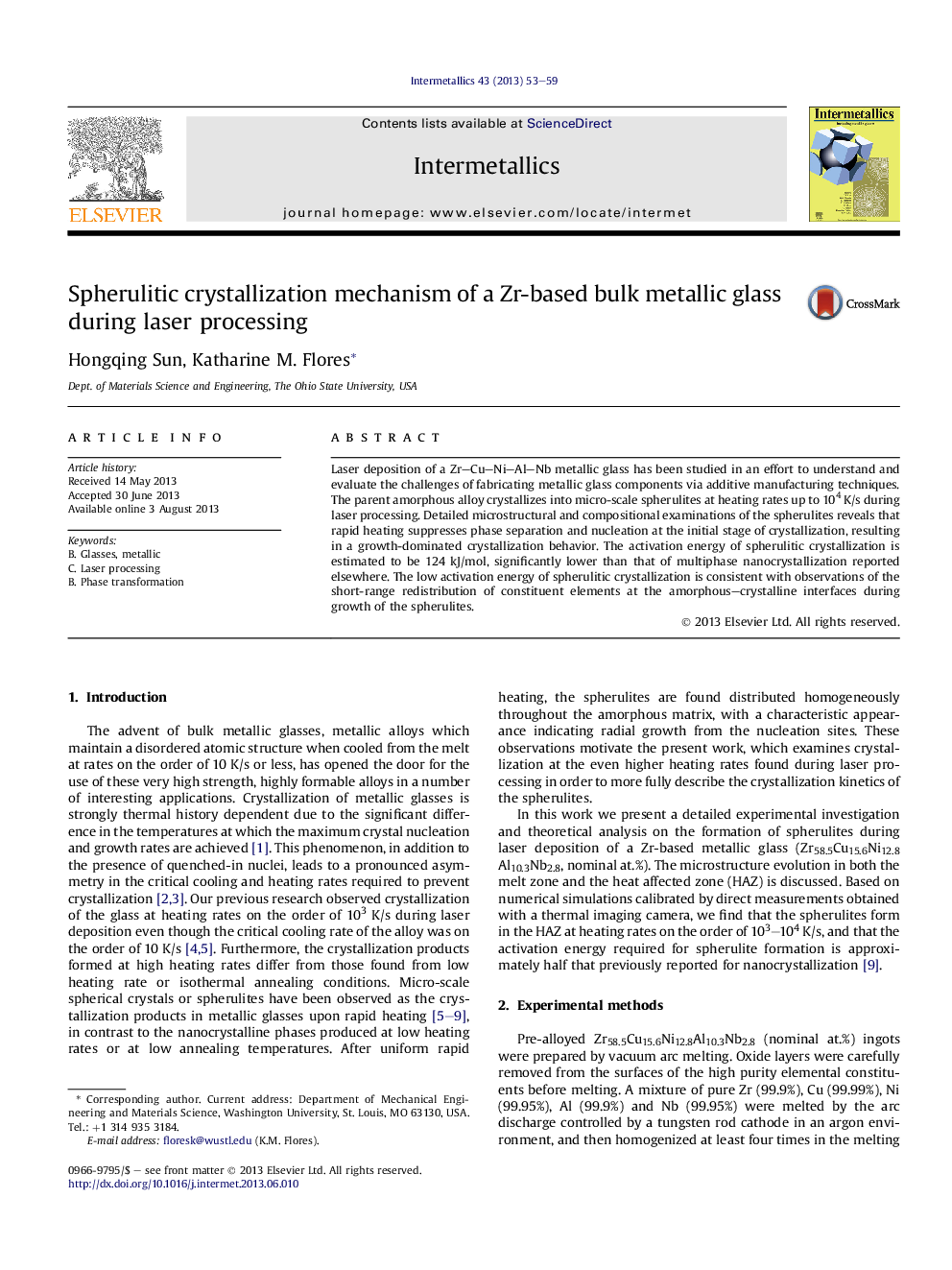| Article ID | Journal | Published Year | Pages | File Type |
|---|---|---|---|---|
| 1600196 | Intermetallics | 2013 | 7 Pages |
•Crystallization due to rapid heating via laser processing is characterized.•Micron-scale spherulites form in the metallic glass as a result of rapid heating.•Spherulite composition is the same as the host glass, without phase separation.•Spherulitic crystallization activation energy is half that of nanocrystallization.
Laser deposition of a Zr–Cu–Ni–Al–Nb metallic glass has been studied in an effort to understand and evaluate the challenges of fabricating metallic glass components via additive manufacturing techniques. The parent amorphous alloy crystallizes into micro-scale spherulites at heating rates up to 104 K/s during laser processing. Detailed microstructural and compositional examinations of the spherulites reveals that rapid heating suppresses phase separation and nucleation at the initial stage of crystallization, resulting in a growth-dominated crystallization behavior. The activation energy of spherulitic crystallization is estimated to be 124 kJ/mol, significantly lower than that of multiphase nanocrystallization reported elsewhere. The low activation energy of spherulitic crystallization is consistent with observations of the short-range redistribution of constituent elements at the amorphous–crystalline interfaces during growth of the spherulites.
